ASM Metals HandBook Vol. 8 - Mechanical Testing and Evaluation
Подождите немного. Документ загружается.

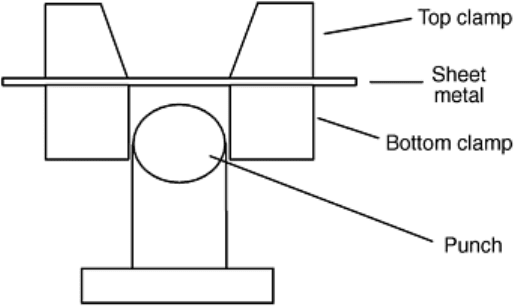
important parameter for drawability is the limiting dome height (LDH). In addition to the fracture data from
punch testing, data from biaxial stretching and tensile tests can also be used for constructing FLDs.
Fig. 31 Schematic of a punch-test device
The specimen can be round or rectangular for the full-size punch test. The specimen is clamped around the
edge. The punch moves at a specified speed (usually between 0.08 and 0.4 mm/s, or 0.003 and 0.015 in./s,
unless simulating a specific operation at a different speed). When the specimen starts necking severely or
fractures, a load drop stops the punch. A hydraulic sheet-metal testing machine has options to vary the
clamping force and program the movement of the punch.
The punch should be lubricated with petroleum jelly. Clamping should be conducted carefully to ensure it does
not cause the specimen to crack at the clamping site. Specimens with grids on them help determine fracture
strains. Circular grids also help identify the directions of major and minor strains after deformation. However, if
a three-dimensional digital measurement system is available, the strains can be calculated automatically, and
square grids are as useful as circular grids.
Different widths of specimens are needed to cover the wide range of major and minor strain combinations.
However, the width can change in the transverse direction or rolling direction, and FLDs constructed with the
two different groups of specimens are different.
References cited in this section
15. “Standard Test Methods for Tension Testing of Metallic Materials,” ASTM E 8, Annual Book of ASTM
Standards, 1994
16. “Standard Test Methods for Elevated Temperature Tension Tests of Metallic Materials,” ASTM E 21,
Annual Book of ASTM Standards, 1994
25. W.F. Hosford and R.M. Caddell, Metal Forming: Mechanics and Metallurgy, Prentice-Hall, Inc., 1983
26. D. Zhao, Temperature Correction in Compression Tests, J. Mater. Process. Technol., Vol 36, 1993, p
467–471
29. “Standard Test Method for Tensile Strain-Hardening Exponents (n-Values) of Metallic Sheet
Materials,” ASTM E 646, Annual Book of ASTM Standards, 1994
37. R.M. Jones, Mechanics of Composite Materials, Taylor & Francis Ltd., New York, 1975, p 32–45
38. C.J. Yu and T. Prucher, Measuring Young's Modulus and Shear Modulus—A Comparison of Dynamic
and Mechanical Techniques, Proc. of the 1993 Powder Metallurgy & Particulate Materials, Vol 1,
1993, p 273–286
39. R. Hill, Mathematical Theory of Plasticity, Oxford University Press, 1950
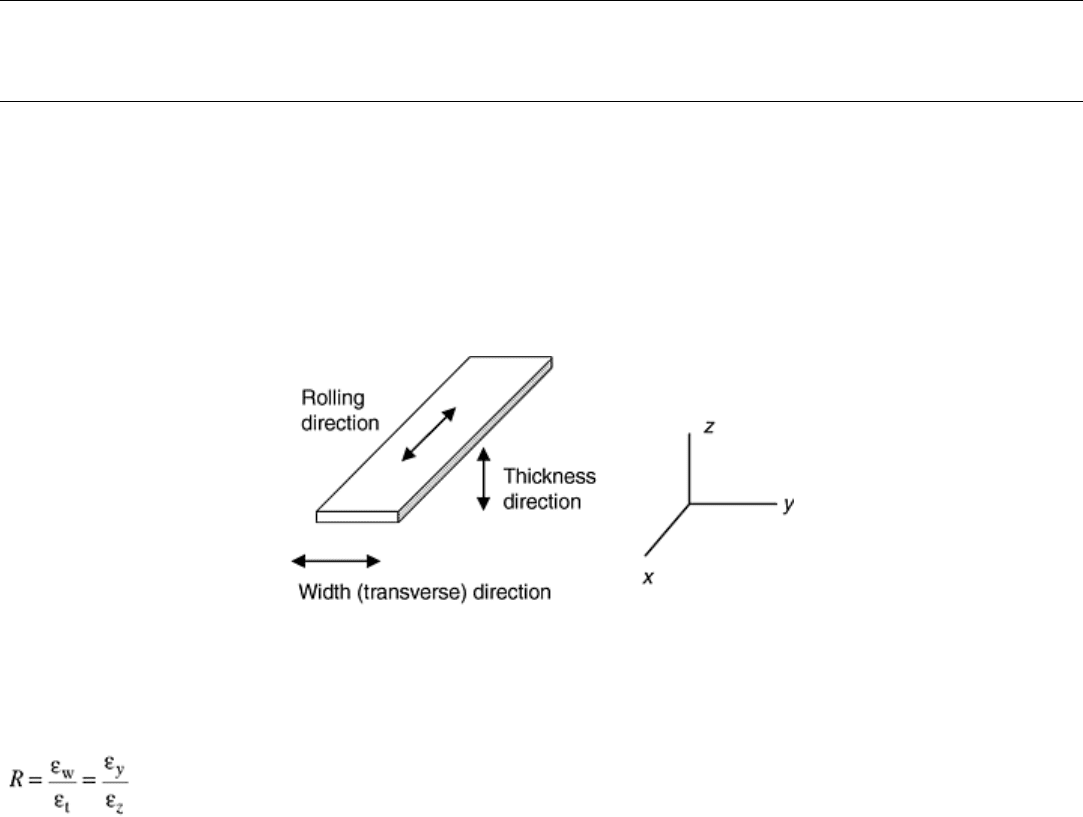
40. J.K. Lee, G.L. Kinzel, and R.H. Wagoner, Ed., NUMISHEET '96, Proc. of 3rd Int. Conf.: Numerical
Simulation of 3-D Sheet-metal forming Processes—Verification of Simulations with Experiments, Sep
29–Oct 3 (Dearborn, MI), 1996
41. S.P. Keeler, Understanding Sheet Metal Formability, parts IV and VI, Mach. Mag., May and July 1968
42. S.S. Hecker, Sheet Met. Ind., Vol 52, 1975, p 671–675
43. H.W. Swift, Plastic Instability Under Plane-Stress, J. Mech. Phys. Sol., Vol 1, 1952, p 1–18
44. “Standard Test Method for Plastic Strain Ratio r for Sheet Metal,” ASTM E 517, Annual Book of ASTM
Standards, 1994
45. S.Y. Lin, R. Czarnek, and P.K. Chaudhury, Modified Grid Method for Plastic-Strain-Ratio
Measurement in Sheet Metal, Proc. of the VIII Int. Congress on Experimental Mechanics (Nashville,
TN), June 1996, p 469–470
46. S.Y. Lin, Plastic-Strain-Ratio Measurement for Sheet Metal Using Modified Grid Method, unpublished
technical report, Concurrent Technologies Corporation, Johnstown, PA, 1998, p 4–5
Testing for Deformation Modeling
Dan Zhao, Johnson Controls, Inc.
Testing for Sheet-Metal Forming
Sheet-metal forming comprises deep drawing, stamping, stretching, drape forming, spin forming, coining,
ironing, bending, blanking, and superplastic forming. Sheet metals are usually produced by rolling, and so
mechanical properties vary along different directions in relation to the rolling direction (RD). Figure 25 shows a
schematic of a sheet-metal specimen and its directions relative to the rolling direction. In addition, spring-back
is significant for sheet metals, and elastic properties are much more important than in bulk forming.
Fig. 25 Schematic of a sheet-metal specimen and its directions relative to the rolling direction
A very important parameter for sheet metal is the ratio (R) of plastic strains in width (transverse) and thickness
directions:
(Eq 24)
Because the strains in thickness direction are difficult to measure, they are usually calculated by using volume
constancy:
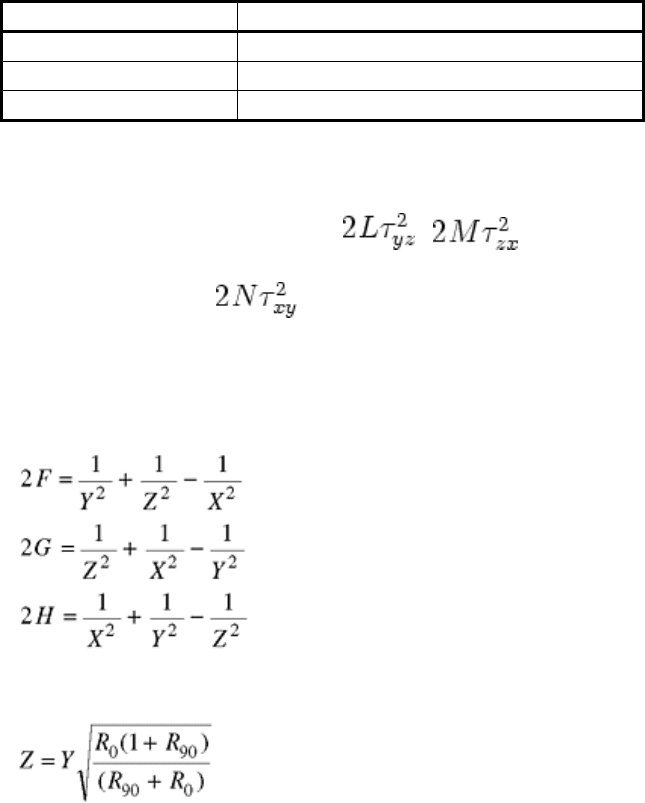
ε
t
= -(ε
l
+ ε
w
)
(Eq 25)
R-values vary in different directions on the plane of the sheet metal, and are usually denoted by the angle (in
degrees) to rolling direction. In the rolling direction, R is denoted as R
0
, and in the transverse direction, as R
90
.
Most sheet-metal forming operations, such as deep drawing and stamping, are performed at room temperature.
However, sheet forming in the aerospace industry with titanium alloys and superalloys almost always are done
at elevated temperatures. Forming at elevated temperatures is also done to achieve the desirable benefits of
superplastic behavior, which is described in more detail in the article “Superplastic Deformation at Elevated
Temperatures” in this Volume.
Constitutive Equations
For elastic deformation, generalized Hooke's law holds (Ref 37):
σ
i
= C
ij
ε
j
i,j = 1, …, 6
(Eq 26)
where σ
i
is the stress component, C
ij
is the stiffness matrix, and ε
j
is the strain component. Due to symmetry, C
ij
has a maximum number of 21 independent constants. Table 2 lists the independent constants for different types
of materials. For orthotropic material, there are nine independent constants; for transversely isotropic materials,
there are five independent constants; and for isotropic materials, there are only two independent constants. The
elastic constants can be measured using nondestructive testing techniques (Ref 38). Once these constants are
determined, they can be directly input into modeling software.
Table 2 Independent constants in stiffness matrix for different types of materials
Material
Independent constants
Orthotropic
C
11
, C
12
, C
13
, C
22
, C
23
, C
33
, C
44
, C
55
, C
66
Transversely isotropic
C
11
, C
12
, C
13
, C
33
, C
44
Isotropic C
11
, C
12
For plastic deformation, Hill's anisotropic yield criterion (Ref 39) has wide recognition:
2f(σ
ij
) = F(σ
y
- σ
z
)
2
+ G(σ
z
- σ
x
)
2
+ H(σ
x
- σ
y
)
2
+ +
+ = 1
(Eq 27)
where F, G, H, L, M, and N are constants that characterize the anisotropy. Tensile tests can be used to determine
constants F, G, and H, and shear tests can be used to evaluate constants L, M, and N.
A tensile test in the x-direction provides the yield strength X. Similarly, tensile tests in the y- and z-directions
provide yield strengths Y and Z. Inputting these yield strengths into Eq 27 solves F, G, and H (Ref 26):
(Eq 28)
However, a tensile test in the thickness direction (z-direction) is very difficult. R-values in rolling and width
directions can be used to obtain Z (Ref 26):
(Eq 29)
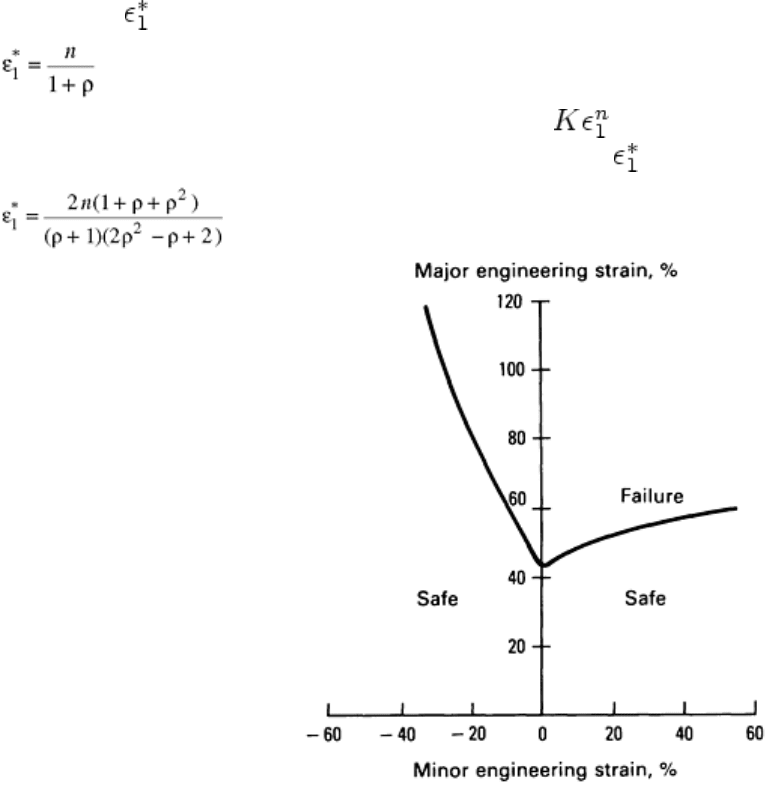
The plastic constitutive behavior for anisotropic material can also be described by Eq 2 for different directions.
Tensile tests can be conducted in the rolling direction, width direction, and the direction 45° from the rolling
direction. Yield strength, tensile strength, uniform elongation, total elongation,the strain-hardening exponent
(n), K-values, R-values, and the strain-rate sensitivity (m) are recorded or calculated. The data can subsequently
be input into commercial software for deformation modeling (Ref 40).
Failure of Sheet Metal
Failure of sheet metals can be caused by either fracture or plastic instability. A general way of describing the
failure is a forming-limit diagram (FLD) (Ref 41). A typical FLD for a low carbon steel is shown in Fig. 26
(Ref 25, 42). If the combination of major and minor strains is above the solid line, failure is likely to occur. If
this combination is under the line, the forming process is safe. Theoretical equations for calculating critical
major strain ( ) have also been developed, including an equation for local necking (Ref 25):
(Eq 30)
where n is strain-hardening exponent, provided that σ
1
= is followed; and ρ is the ratio of minor strain to
major strain, ε
2
/ε
1
. For diffuse necking, the critical major strain ( ) is (Ref 43):
(Eq 31)
Fig. 26 Typical forming-limit diagram for steel
Tensile Test
Tensile tests for sheet metal are specified in ASTM standards (Ref 15, 16, 29, and 44). Several special issues
for sheet metals are discussed in the following sections.
Specimen Preparation. Specimens can be rectangular with or without reduced section. The specimens can be
either machined or sheared. Sawing is also permitted by the applicable ASTM standard (Ref 44), but may not
provide good dimensional control. Shearing with a precise punch and die is the most efficient way of making
specimens. Computer numerical control machining, though slower than punching, is very precise and
introduces little deformation along the machined surfaces. Specimens should be made along different directions
to reflect anisotropy. Figure 27 shows the orientation of specimens on a piece of sheet metal.
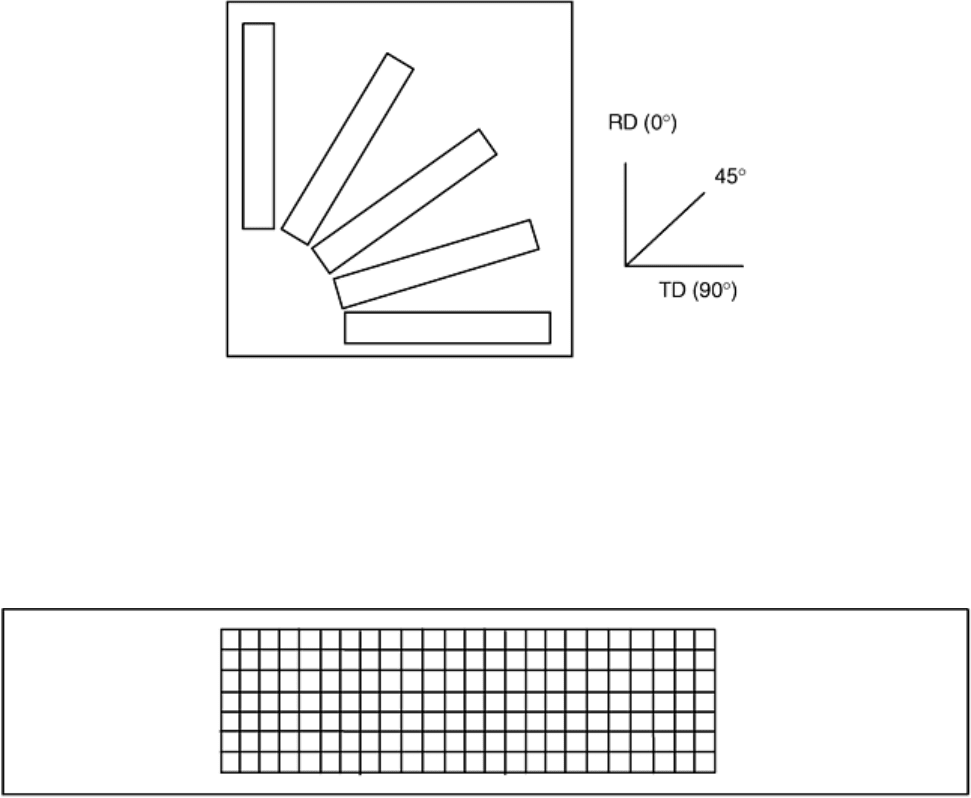
Fig. 27 Sheet-metal specimen orientations for tensile testing. RD, rolling direction; TD, transverse
direction
Commercial extensometers are available for strain measurement. To measure local strains, grid patterns can be
put on the specimen surface over the gage length, as shown in Fig. 28. The patterns can be inscribed on a layer
of paint (Ref 45, 46), photoetched, or thermally transferred from printed transparencies. Thermally transferred
patterns printed with a laser printer can stand testing temperatures up to 1200 °C (2190 °F). The size of the grid
can be 1 to 2 mm (0.04–0.08 in.) to permit accurate local measurement.
Fig. 28 Grid pattern on the specimen gage length
Alignment of the Specimen. Special care should be taken to ensure the alignment of the specimen with a
gripping apparatus. Improper gripping results in bending of the specimen, especially in the width direction. It is
helpful to mark the specimen with gripping lines for reference.
Measurement of Strain. Displacement of the grid on the specimen can be recorded with a high-speed camera for
calculation of instantaneous strains (Fig. 29). If a camera is not available, displacement can be measured
manually. However, manual measurement is difficult at elevated temperatures. The fracture strains can always
be measured manually with a microscope. Some specialized three-dimensional displacement-measurement
systems, as shown in Fig. 30, are also available (Ref 45, 46).
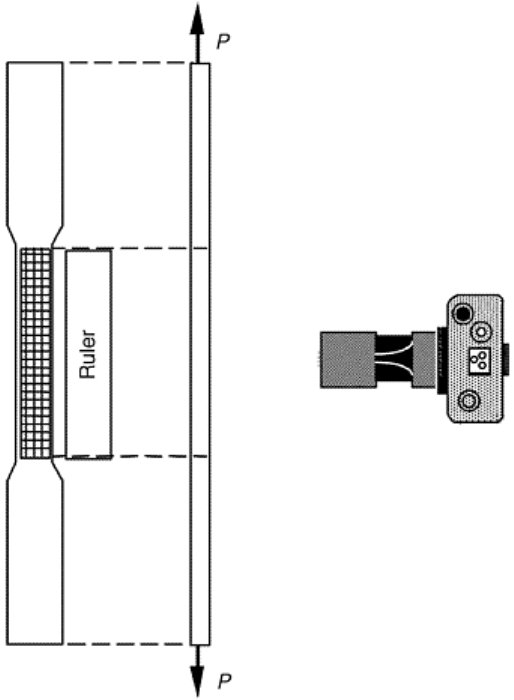
Fig. 29 Strain recording with a camera during a tensile test of a sheet-metal specimen. Source: Ref 46
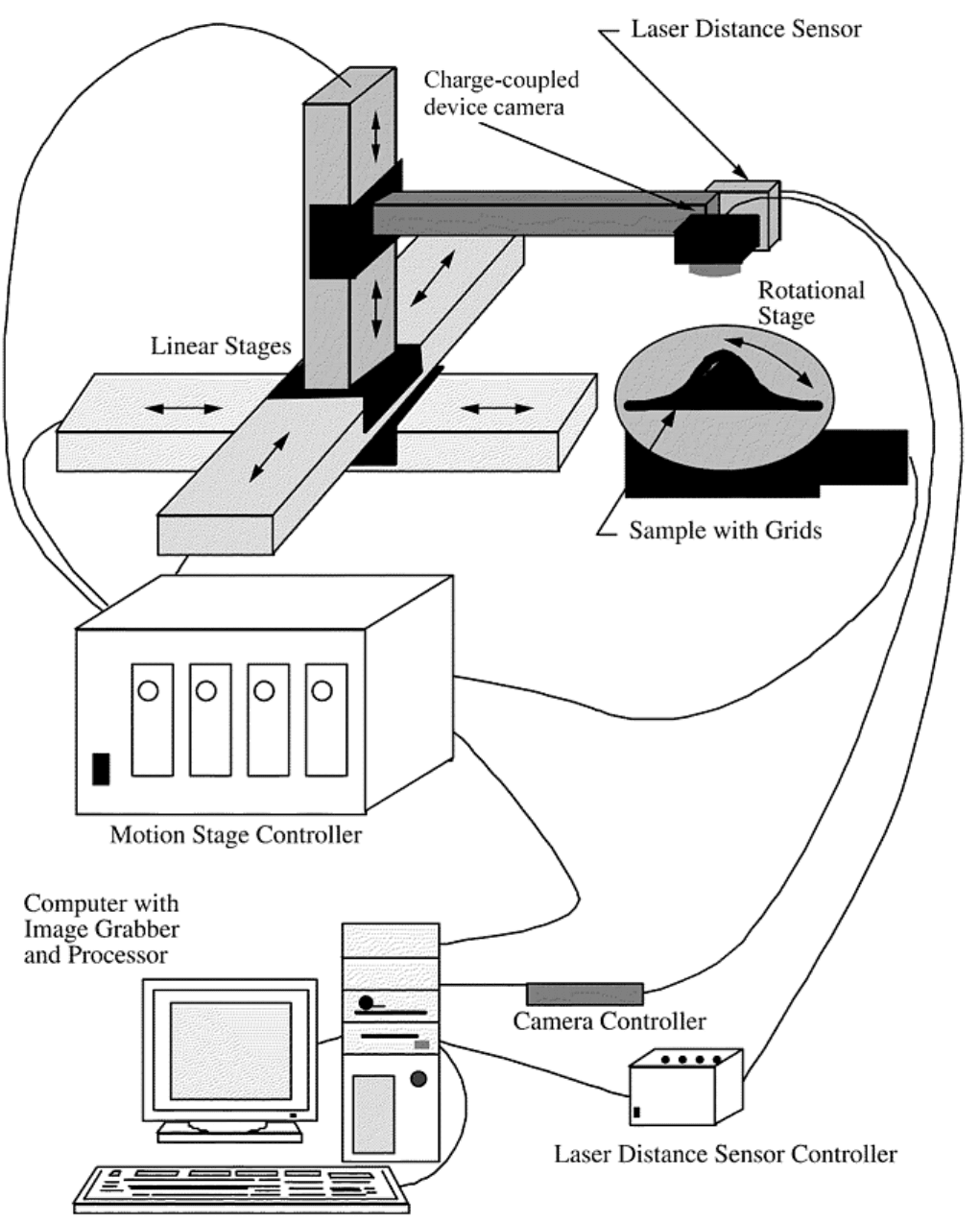
Fig. 30 Automatic noncontact 3-D surface-deformation measuring system. Source: Ref 46
Punch Testing
The punch test is used to obtain data for constructing FLDs of sheet metals. A schematic is shown in Fig. 31 for
a punch-test apparatus. Punch testing can also be used to measure the workability for deep drawing. An
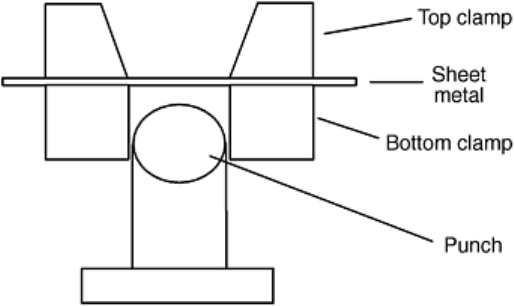
important parameter for drawability is the limiting dome height (LDH). In addition to the fracture data from
punch testing, data from biaxial stretching and tensile tests can also be used for constructing FLDs.
Fig. 31 Schematic of a punch-test device
The specimen can be round or rectangular for the full-size punch test. The specimen is clamped around the
edge. The punch moves at a specified speed (usually between 0.08 and 0.4 mm/s, or 0.003 and 0.015 in./s,
unless simulating a specific operation at a different speed). When the specimen starts necking severely or
fractures, a load drop stops the punch. A hydraulic sheet-metal testing machine has options to vary the
clamping force and program the movement of the punch.
The punch should be lubricated with petroleum jelly. Clamping should be conducted carefully to ensure it does
not cause the specimen to crack at the clamping site. Specimens with grids on them help determine fracture
strains. Circular grids also help identify the directions of major and minor strains after deformation. However, if
a three-dimensional digital measurement system is available, the strains can be calculated automatically, and
square grids are as useful as circular grids.
Different widths of specimens are needed to cover the wide range of major and minor strain combinations.
However, the width can change in the transverse direction or rolling direction, and FLDs constructed with the
two different groups of specimens are different.
References cited in this section
15. “Standard Test Methods for Tension Testing of Metallic Materials,” ASTM E 8, Annual Book of ASTM
Standards, 1994
16. “Standard Test Methods for Elevated Temperature Tension Tests of Metallic Materials,” ASTM E 21,
Annual Book of ASTM Standards, 1994
25. W.F. Hosford and R.M. Caddell, Metal Forming: Mechanics and Metallurgy, Prentice-Hall, Inc., 1983
26. D. Zhao, Temperature Correction in Compression Tests, J. Mater. Process. Technol., Vol 36, 1993, p
467–471
29. “Standard Test Method for Tensile Strain-Hardening Exponents (n-Values) of Metallic Sheet
Materials,” ASTM E 646, Annual Book of ASTM Standards, 1994
37. R.M. Jones, Mechanics of Composite Materials, Taylor & Francis Ltd., New York, 1975, p 32–45
38. C.J. Yu and T. Prucher, Measuring Young's Modulus and Shear Modulus—A Comparison of Dynamic
and Mechanical Techniques, Proc. of the 1993 Powder Metallurgy & Particulate Materials, Vol 1,
1993, p 273–286
39. R. Hill, Mathematical Theory of Plasticity, Oxford University Press, 1950

40. J.K. Lee, G.L. Kinzel, and R.H. Wagoner, Ed., NUMISHEET '96, Proc. of 3rd Int. Conf.: Numerical
Simulation of 3-D Sheet-metal forming Processes—Verification of Simulations with Experiments, Sep
29–Oct 3 (Dearborn, MI), 1996
41. S.P. Keeler, Understanding Sheet Metal Formability, parts IV and VI, Mach. Mag., May and July 1968
42. S.S. Hecker, Sheet Met. Ind., Vol 52, 1975, p 671–675
43. H.W. Swift, Plastic Instability Under Plane-Stress, J. Mech. Phys. Sol., Vol 1, 1952, p 1–18
44. “Standard Test Method for Plastic Strain Ratio r for Sheet Metal,” ASTM E 517, Annual Book of ASTM
Standards, 1994
45. S.Y. Lin, R. Czarnek, and P.K. Chaudhury, Modified Grid Method for Plastic-Strain-Ratio
Measurement in Sheet Metal, Proc. of the VIII Int. Congress on Experimental Mechanics (Nashville,
TN), June 1996, p 469–470
46. S.Y. Lin, Plastic-Strain-Ratio Measurement for Sheet Metal Using Modified Grid Method, unpublished
technical report, Concurrent Technologies Corporation, Johnstown, PA, 1998, p 4–5
Testing for Deformation Modeling
Dan Zhao, Johnson Controls, Inc.
Testing for Semisolid Forming and Polymer Extrusion
Semisolid forming has become popular due to improved mechanical properties of the parts compared to those
made by casting. Polymer extrusion has flow characteristics very similar to those of semisolid forming.
Constitutive Equations
The deformation of a semisolid is significantly affected by temperature and strain rate, as with a solid. The only
difference is that the deformation of a semisolid is characterized by shear rate instead of strain rate.
Newton's law of viscosity states (Ref 47, 48):
(Eq 32)
where τ
yx
, is shear stress, η is viscosity, v
x
is velocity, and is shear rate.
For Newtonian fluid, viscosity is only a function of temperature, and does not depend on shear rate. Most liquid
metals and alloys are Newtonian. However, semisolid alloys, as well as polymeric materials, exhibit Non-
Newtonian behavior. The viscosity of those materials varies with shear rate; in most cases, it decreases with
increasing shear rate—so-called shear thinning. Figure 32 shows the viscosity behavior of Newtonian and Non-
Newtonian fluids (Ref 47).
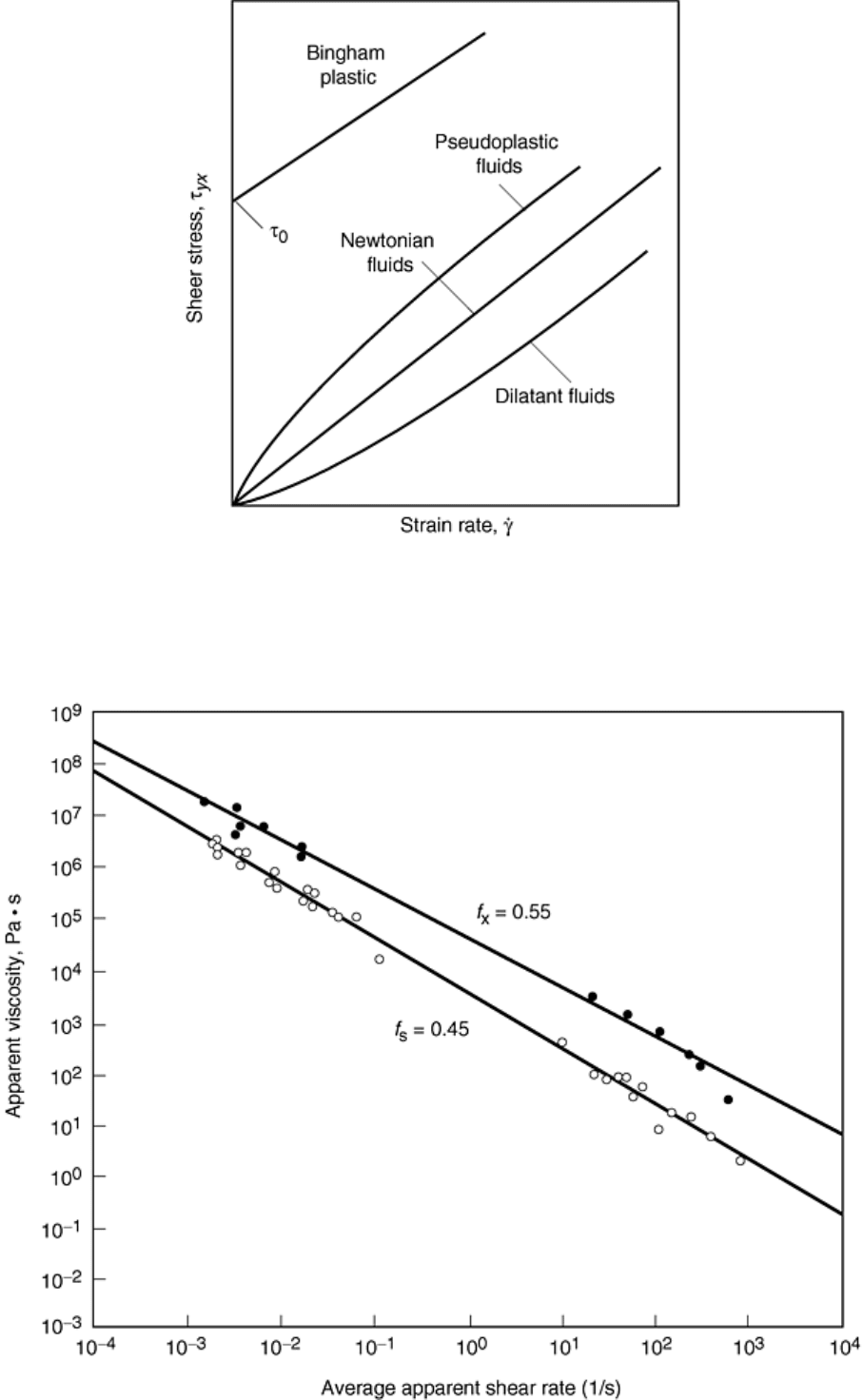
Fig. 32 Stress-strain rate curves for time-independent fluids. Source: Ref 47
For semisolid materials, viscosity is a function of temperature, shear rate, and fraction of solid. Figure 33 shows
the viscosity of an Al-Si-Mg alloy with 0.45 and 0.55 solid fractions (Ref 49). Figure 34 shows viscosity
variation as a function of temperature and shear rate for a polymer compound.
